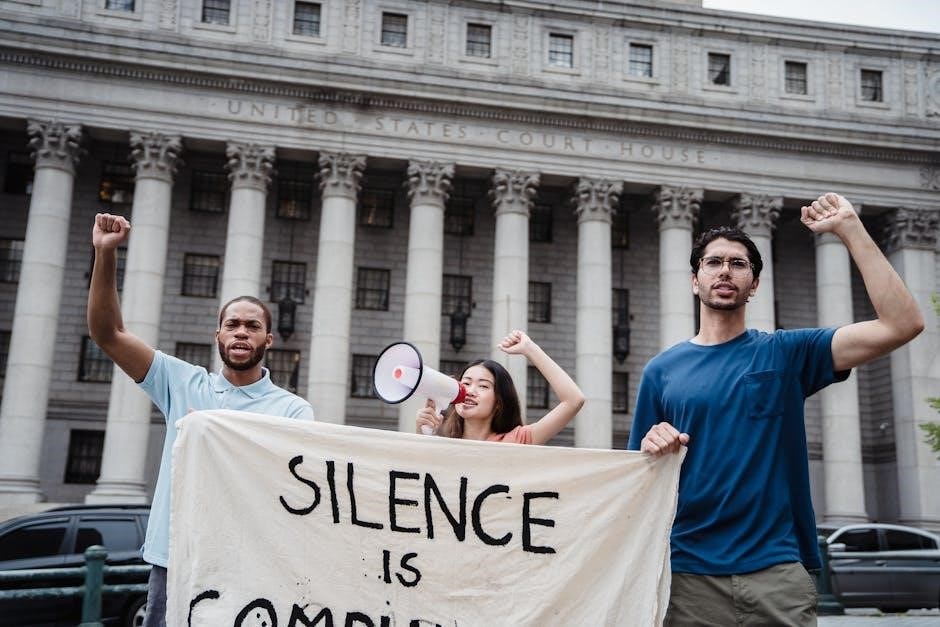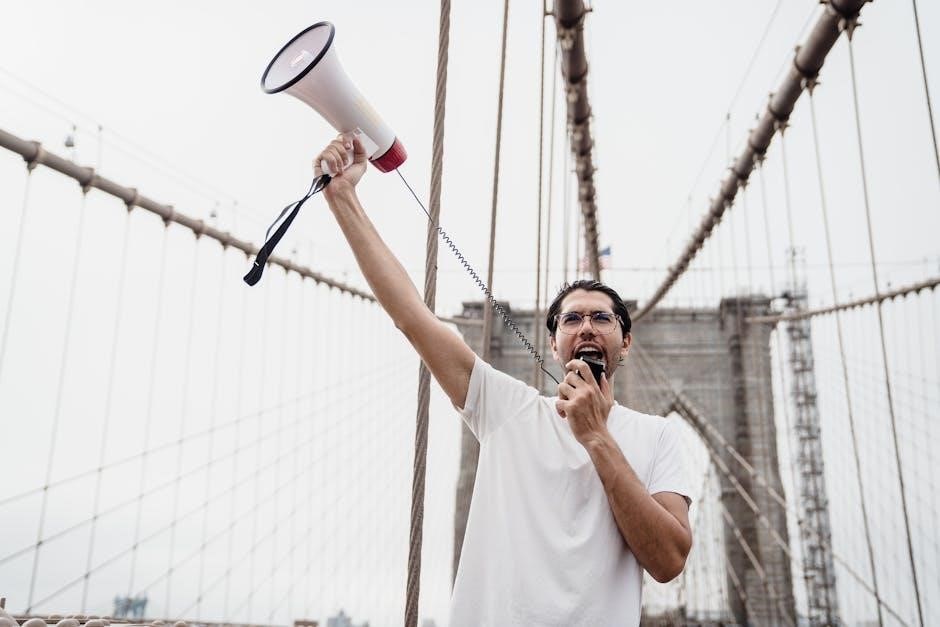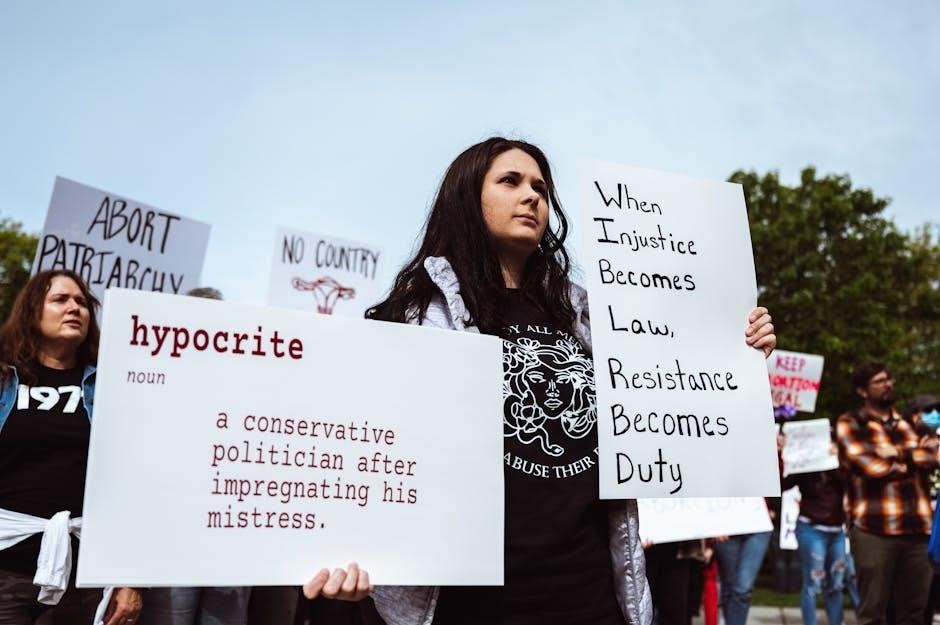
Delivered by President Franklin D. Roosevelt in 1941, the Four Freedoms Speech outlined a vision for a post-war world founded on four essential human rights: freedom of speech, freedom of worship, freedom from want, and freedom from fear. This iconic address inspired hope and unity during a time of global crisis, shaping the Allies’ objectives in World War II and leaving a lasting legacy in the pursuit of universal human dignity.
Historical Context of the Speech
Delivered on January 6, 1941, during his State of the Union address to Congress, the Four Freedoms Speech was a pivotal moment in American history. The world was engulfed in World War II, with Nazi Germany dominating Europe, Japan expanding in Asia, and fascist regimes threatening democracy globally. The United States, still recovering from the Great Depression, remained largely isolationist, hesitant to engage in another global conflict. However, President Franklin D. Roosevelt recognized the growing threat to freedom and democracy, urging Americans to look beyond their borders and support nations resisting aggression.
The speech was crafted to inspire hope and unity, framing the war as a moral struggle between tyranny and freedom. Roosevelt emphasized that the U.S. had a responsibility to protect democracy and human rights, even as it maintained neutrality. The address also highlighted the interconnectedness of global security, arguing that threats to freedom anywhere endangered freedom everywhere. By articulating the Four Freedoms, Roosevelt not only rallied Americans but also provided a vision for a post-war world order, influencing later initiatives like the Atlantic Charter and the United Nations. The speech marked a turning point in U.S. foreign policy, shifting public opinion toward intervention and preparing the nation for its eventual entry into World War II.

The Four Freedoms as Outlined in the Speech
The Four Freedoms are universal rights outlined by FDR: freedom of speech, freedom of worship, freedom from want, and freedom from fear. These principles envisioned a post-war world where all people could live securely and dignified lives.
Freedom of Speech
Freedom of speech, as outlined in Roosevelt’s speech, is the first of the Four Freedoms and a cornerstone of democracy. It emphasizes the universal right to express thoughts and opinions without fear of censorship or reprisal. Roosevelt envisioned a world where this freedom is upheld everywhere, ensuring that no individual or group is silenced. This principle was particularly significant during World War II, as it contrasted sharply with the oppressive regimes of Axis powers, which suppressed dissent and free expression. The inclusion of freedom of speech in the Four Freedoms underscored its importance as a foundational human right, essential for fostering informed societies and resisting tyranny. By advocating for this freedom, Roosevelt not only inspired hope but also reinforced the Allies’ commitment to defending democratic values. The speech’s emphasis on freedom of speech remains a powerful symbol of the struggle for liberty and human dignity, resonating beyond the wartime context into modern global discourse.
Freedom of Worship
Freedom of worship, the second of the Four Freedoms, underscores the universal right to practice religion freely and without persecution. Roosevelt emphasized that every individual should be able to worship God in their own way, anywhere in the world. This principle was central to his vision of a post-war world, where diversity of faith and belief could coexist peacefully. During World War II, this freedom stood in stark contrast to the oppressive policies of Axis powers, which often targeted religious minorities and suppressed spiritual expression. By championing freedom of worship, Roosevelt sought to promote tolerance and combat the forces of intolerance and dictatorship. This freedom also resonated deeply with Americans, reinforcing the nation’s founding ideals of religious liberty. The inclusion of freedom of worship in the Four Freedoms speech highlighted its importance as a cornerstone of human rights and a vital component of a just and equitable society. It remains a powerful reminder of the enduring struggle for religious freedom worldwide.

Freedom from Want
Freedom from want, the third of the Four Freedoms, envisions a world where all individuals have access to the resources necessary to live a dignified life, free from poverty and hunger. Roosevelt argued that economic security and social stability are fundamental human rights, essential for global peace and prosperity. He believed that true freedom could only be achieved when everyone had enough to eat, adequate shelter, and access to healthcare. This principle was a direct response to the widespread suffering caused by the Great Depression and the economic instability that contributed to the outbreak of World War II. By advocating for freedom from want, Roosevelt called for international cooperation to address economic disparities and ensure that all nations could provide for their citizens. This vision not only inspired hope during a time of global turmoil but also laid the groundwork for post-war initiatives aimed at rebuilding economies and promoting social welfare. Freedom from want remains a cornerstone of human rights and a reminder of the importance of economic justice in creating a more equitable world.
Freedom from Fear
The fourth freedom, freedom from fear, as outlined in Roosevelt’s speech, called for a world where no nation or individual lives in fear of aggression or violence. This principle emphasized the need to reduce armaments and establish a system of collective security to prevent war and protect the vulnerable. Roosevelt argued that fear of attack or domination undermines peace and stability, and he envisioned a global order where military force was no longer a tool of intimidation. This freedom was closely tied to the idea of ending aggression and ensuring that all nations could coexist without the constant threat of conflict. By advocating for freedom from fear, Roosevelt hoped to create a foundation for lasting peace and cooperation, where no country would need to live in dread of its neighbors. This vision resonated deeply during World War II, as the world sought to move beyond the devastation of global conflict and build a more secure future. Freedom from fear remains a powerful ideal, inspiring efforts to promote disarmament and international cooperation.
Impact of the Four Freedoms Speech on World War II

The Four Freedoms Speech had a profound impact on World War II by galvanizing American support for the war effort and shaping the Allies’ vision for the post-war world. Delivered in 1941, before the U.S. officially entered the war, the speech rallied Americans by framing the conflict as a struggle for democracy and human rights, rather than merely a geopolitical battle. Roosevelt’s call to protect freedom of speech, worship, and freedom from want and fear resonated deeply, inspiring a sense of moral purpose among the population. The speech also influenced the development of the Atlantic Charter, a joint statement by the U.S. and the U.K. outlining Allied goals for the war, including self-determination and improved labor standards. Additionally, the Four Freedoms became a powerful propaganda tool, boosting morale both on the home front and among troops abroad. The speech’s emphasis on universal human rights helped to unite the Allies under a shared cause, ultimately contributing to the war’s outcome and laying the groundwork for the establishment of the United Nations and the Universal Declaration of Human Rights. Its legacy continues to inspire global efforts toward peace and justice.

Legacy and Relevance of the Four Freedoms Today
The Four Freedoms Speech continues to hold significant relevance in the modern world, inspiring global efforts toward democracy, human rights, and social justice. Its vision of a world founded on freedom of speech, worship, and freedom from want and fear has endured as a cornerstone of international ideals. The speech directly influenced the creation of the United Nations and the Universal Declaration of Human Rights, shaping the post-war international order. Today, the Four Freedoms remain a powerful symbol of humanity’s aspirations for dignity and equality. They have inspired movements for civil rights, gender equality, and environmental sustainability, demonstrating their timeless appeal. The speech’s emphasis on freedom from want aligns with contemporary efforts to address global poverty and inequality, while freedom from fear resonates in the context of modern security challenges. The Four Freedoms have also been commemorated in art, such as Norman Rockwell’s iconic paintings, ensuring their message remains vivid in popular culture. As the world faces new challenges, Roosevelt’s vision reminds us of the importance of protecting fundamental human rights and striving for a more just and peaceful world.